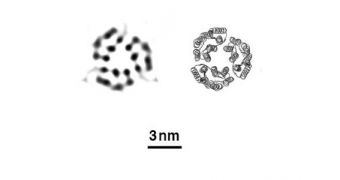A group of investigators at the US Department of Energy's (DOE) Pacific Northwest National Laboratory (PNNL) was recently able to use an instrument known as the X-ray free electron laser (XFEL) to study the structure of proteins in a single molecule-thick sheet.
Currently, proteins can only be studied through X-ray crystallography, where many layers of identical molecules are stacked next to, and on top of, each other, and then bombarded with energetic light. XFEL have the potential to be far more efficient, since they only require a single molecule-thick sheet of proteins to conduct investigations.
This is largely due to the exceptionally bright and fast X-rays that this type of lasers can produce. “In this paper, we're proving it's possible to use an XFEL to study individual monolayers of protein. Just being able to see any diffraction is brand new,” explains James Evans, a microscopy expert at PNNL.
The type of light required to achieve this capability could only be produced at one of the most advanced laser facilities in the world, the Linac Coherent Light Source. The installation is located at the SLAC National Accelerator Laboratory in Menlo Park, California.

 14 DAY TRIAL //
14 DAY TRIAL //